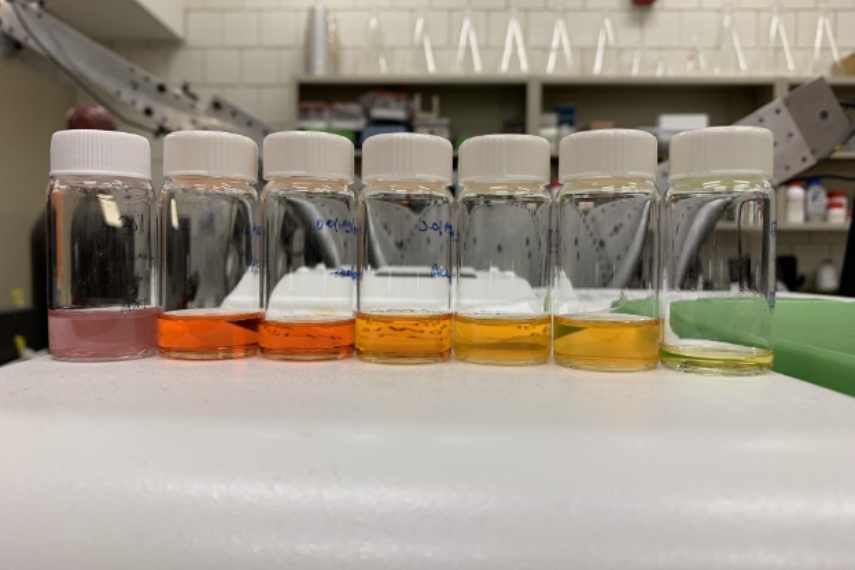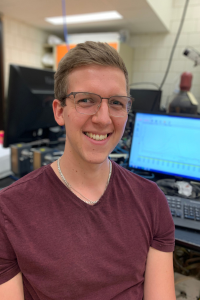Natural Nanomaterial to Improve Bioactive Solubility

The Problem with Water
Pharmaceutical drugs and other therapeutics can offer many benefits to human health. However, many of the active compounds in these products suffer from a difficult problem: their poor solubility in water. Hydrophobic compounds, meaning “water-fearing,” do not mix easily with water– think of oil droplets floating in a puddle. Water accounts for a large percent of the human body’s composition and is vital to many processes. When an active compound is hydrophobic, it cannot easily reach its intended target in the body and does not perform to its full potential.

To overcome this hurdle, several approaches have been used. However, these approaches tend to be complex and can even increase toxicity. Physics Professor and CEPS Research Chair in Novel Sustainable Nanomaterials Dr. John Dutcher and PhD candidate Nicholas van Heijst in the Department of Physics are working on a new method of improving the water solubility of hydrophobic compounds. Their approach utilizes a promising material harvested from sweet corn.
A Tiny Solution to a Big Problem
Phytoglycogen (PG) is a sugar-based nanoparticle produced in many plants including sweet corn. It is safe to use in human health and food applications and, unlike hydrophobic compounds, can be easily dispersed in water. The nanoparticles also contain a large number of potential sites on its surface where small molecules can associate, shielding them from water.
Dutcher and van Heijst wanted to learn if PG can be used to improve the water solubility of hydrophobic compounds, an important step in improving their efficacy. They tested the physical association of PG with astaxanthin, the compound responsible for the pink colour of salmon and shellfish.

“Astaxanthin is an ideal test molecule because it is brightly coloured, making it easy to visualize and quantify results,” said van Heijst.
Astaxanthin has several potential health benefits, including antioxidant and anti-inflammatory properties, but is practically insoluble in water.
The team developed a simple process to successfully combine PG and astaxanthin. When added to water, the PG-astaxanthin complex showed an improvement in solubility of more than a trillion times compared to astaxanthin on its own.
“It’s like going from the cost of a Tim Horton’s cookie to the GDP of Canada,” said van Heijst.
Promising Potential
The team plans to continue testing other hydrophobic compounds in PG complexes to better understand the mechanism responsible for the improvement in solubility.
“By understanding how PG improves the solubility of astaxanthin, we can potentially apply this to other systems,” said van Heijst.
If successful, their methods could be used to make safer and more effective treatments from poorly soluble drugs and other therapeutics.
This story was written by Carley Miki as part of the Science Communicators: Research @ CEPS initiative. Miki is a PhD candidate in the Department of Physics under Dr. John Dutcher. Her research focus is on understanding the forces and interactions between soft, sugar-based nanoparticles and how they differ when charged.
This work is supported by the National Sciences and Engineering Research Council (NSERC) of Canada.
Van Heijst, N., Whiting, P., Dutcher, J. R. Solubilization of Hydrophobic Astaxanthin in Water by Physical
Association with Phytoglycogen Nanoparticles. Biomacromolecules. 2024, 25, 7, 4110-4117. doi: https://doi.org/10.1021/acs.biomac.4c00214